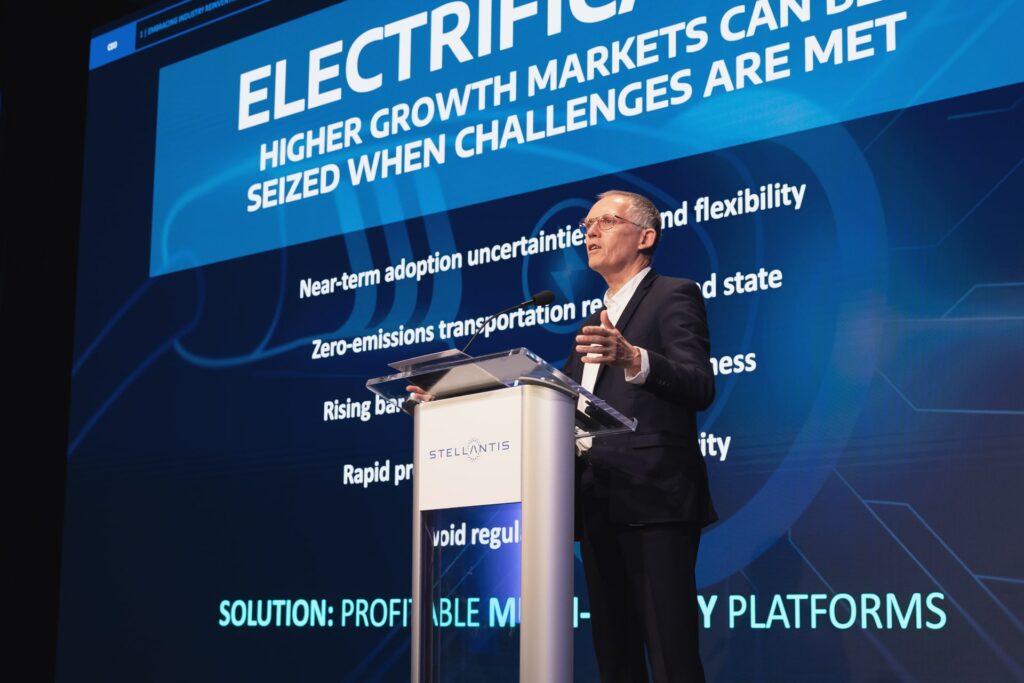Stellantis is partnering with battery manufacturer Contemporary Amperex Technology (CATL) and other Chinese players to produce electric vehicles and batteries at home in Europe, seeking to compete better against cheaper imports from China.
The European Union recently announced additional tariffs of up to 38% on Chinese EV imports, citing unfair subsidies from Beijing. Stellantis, whose brands include Fiat, Chrysler, and Jeep, looks to boost European output to avoid this duty while still leaning on the expertise of cost-competitive Chinese players.
CEO Carlos Tavares outlined the strategy as Stellantis held its inaugural investor day in Michigan on June 13.

The automaker will work with CATL on lithium iron phosphate batteries, which are relatively inexpensive to produce because they do not require rare metals. LFP batteries are a key factor that makes many Chinese EVs so cost competitive.
Stellantis will revise its battery production plans to make better use of CATL’s expertise. Its joint venture with Mercedes-Benz and other partners planned to construct new facilities for lithium-ion batteries in Germany and Italy, but the plan is suspended while Stellantis considers producing LFP batteries at the sites instead.
The multinational automaker has also teamed with Chinese EV startup Leapmotor in the Netherlands. Their joint venture will consider producing Leapmotor EVs at Stellantis facilities in Europe, to be sold in nine European countries including Germany starting in September.
The Stellantis partnerships come amid intensifying competition on EV prices.
“We recognize that [Chinese players] have a 30% cost-competitive edge against the Western world,” Tavares said.
With less expensive Chinese EVs making their way into Europe, Stellantis worries it cannot compete solely using in-house technologies.
Tavares questioned whether the new tariff can correct the “magnitude of the gap” between European and Chinese players on cost competitiveness.
Stellantis’ strategy “is about making sure that we are ourselves offensive and surfing the wave of the Chinese offensive,” he said.
Stellantis has been able to pursue these partnerships in part because of its limited presence in the Chinese market. The automaker makes just 1% of its new vehicle sales in China.
Meanwhile, BMW sells 32% of its new vehicles in China and also exports Chinese-made EVs to Europe. Unlike Stellantis, it cannot easily shift production to Europe without heavily impacting its Chinese operations.
But these partnerships alone will not drive substantial growth. Stellantis also is working to cut costs, and stands on track to achieve its goal of reducing annual costs by EUR 5 billion (USD 5.39 billion) a year ahead of schedule in 2024.
This article first appeared on Nikkei Asia. It has been republished here as part of 36Kr’s ongoing partnership with Nikkei.
